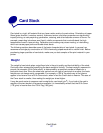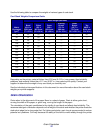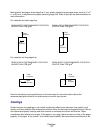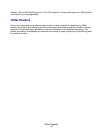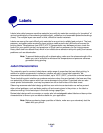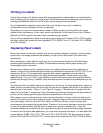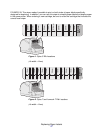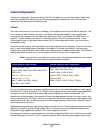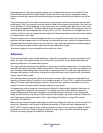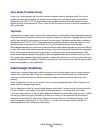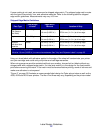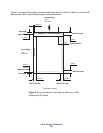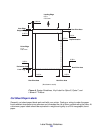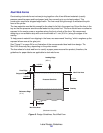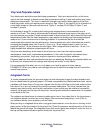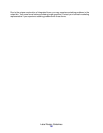
Label Components
19
gloss appearance. High gloss, glazed surfaces may increase skew and are more difficult for the
printer’s feed mechanism to handle reliably. Some Kraft liners may produce acceptable results;
however, we strongly recommend extensive testing of pressure sensitive constructions using Kraft
liners.
Tissue-backed or plain bond liners reduce toner contamination inside the printer and improve feed
performance. Slick, non-porous liners are harder to feed and increase toner buildup in the fuser and
on the backup roll. Rough backings, on the other hand, can increase paper path friction, which can
cause skew and paper jams. The face material of the liner needs to have a melt temperature that can
also withstand the fuser temperatures of nearly 225°C (437°F). Since there is a stripped area of a
maximum of 3 mm, this can expose the face material to these temperatures and could cause melting
or contamination in the fuser.
Excessive paper dust or chaff associated with the liner may affect print quality. If a liner material
produces excessive paper dust or chaff during the conversion process, some of this debris may be
packaged with the material and end up in the printer. Liner materials that produce excessive paper
dust or chaff as they feed through the printer may also affect print quality.
Your forms supplier can provide additional information on liners.
Adhesives
There are three basic types of label adhesives: removable, permanent, and semi-permanent (cold
temp). All types, with proper design, can be used with your printer. Acrylic-based adhesives are
generally preferred for cut sheet label printers.
The major adhesive-related printing problem is printer and cartridge contamination. The adhesives
are semi-liquid and may contain volatile components. If the sheet jams in the fuser, the adhesive can
melt, thereby contaminating parts of the printer or releasing fumes. To avoid exposing adhesive to
the paper path guides, drive rollers, charge roller, photoconductor drum, transfer roller, and detack
fingers, use full label sheets.
Zone coating means placing the adhesive only where needed. Paper labels and integrated forms
typically use zone coating. In addition, a non-adhesive border of 1 mm (0.04 in.) around the outside
edge of the label sheet generates good results. Check with your adhesive manufacturer or forms
supplier for more information about designing labels for your printer.
A stripped edge matrix along the outer border of the stock, combined with adhesive that does not
ooze, helps prevent adhesive contamination. This design requires a stiffer backing material to
prevent damage when the sheet is aligned on the reference edge. Generally, vinyl and polyester
labels are well suited for this design. Paper and dual web designs may require testing to determine
which backing produces good results. (See “Label Design Guidelines” on page 20 for more
information on matrices.)
Make sure the release strength is adequate so labels stay attached to the liner and do not peel off in
the printer. Adhesives must be able to withstand pressures to 25 psi and fuser temperatures of
225°C (437°F) without delaminating, creating hazardous fumes, or oozing around edges of labels,
perforations, or die-cuts. Shear strength should be strong enough to prevent adhesive stringers.
Contact your forms supplier for additional information.



